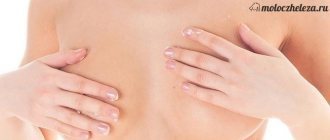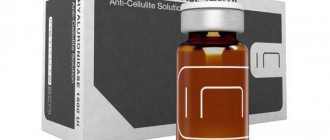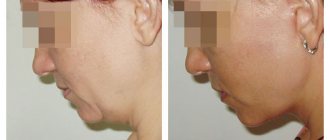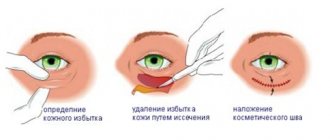Women's breasts, according to many men, are one of the most attractive parts of a woman's body. Ideal breasts, the object of many women's desire, are ideal in every way. It is not only the right size, optimally in harmony with the body, but also a neat shape, symmetrical arrangement and much more.
Beautiful, aesthetically attractive nipples are another component of ideal breasts. Moreover, the beauty of nipples is a complex concept. Just like the breasts, this is a normal shape and correct location, natural color and so on.
Modern plastic surgery offers a huge number of different operations. Among them there is nipple plastic surgery. Recently, this operation has become very, very popular. However, it should be noted that the popularity of this intervention is due not so much to the desire to achieve the ideal in everything, but to fashion.
Not long ago, Western countries were swept by the fashion for highly transparent clothing. Of course, such clothes must match - and girls began to turn en masse to plastic surgery clinics to correct their areolas and be able to wear a transparent top with pleasure and pride.
Currently, the number of patients wishing to have their nipples corrected has approximately quadrupled. Looking at trendsetters or Hollywood celebrities, ordinary women also want to do without underwear and wear revealing things. And not just to wear, but also to look as attractive as possible in them.
What can be changed with surgery?
Often, patients seek the help of a plastic surgeon if they are not satisfied with the shape of their nipples - for example, they are too retracted or even flat. But often women also have normal erect nipples and just want to make them even bigger.
Another popular request is asymmetry correction. In general, it is worth saying that nipple asymmetry is normal for most women. But celebrities with perfect breasts and equally perfect nipples set the bar very high. Many women want to look as attractive as the stars.
After childbirth, nipples usually change color, becoming darker. In this case, patients are asked to lighten their areolas. Sometimes the areolas can also stretch; in this situation, the plastic surgeon can reduce their size and make the overall appearance of the areolas more neat and aesthetic.
Consequences and causes of small nipples
Flattened or reduced nipples, relative to the average physiological norm, are a sign of short milk ducts. Such nipples are not able to act as an areola and when pressed they do not harden, but are retracted under the skin.
In very rare moments, they are insensitive or do not feel anything at all and do not react to anything, neither to touch nor to temperature. This structure is characteristic of ten percent of all females, but this cannot be called an anomaly.
They do not interfere with feeding. However, sometimes, if the nipples are incredibly small, this can lead to difficulties in breastfeeding, that is, the baby will not be able to latch on with his lips.
In such moments, correcting the shape of the nipple can help solve this problem. In all other cases, this is more of a psychological problem and it is solved through aesthetic medicine, and certainly not through therapeutic medicine.
Breastfeeding is a biologically correct, natural and natural process that is formed by nature.
It is not only capable of providing the newborn with all the nutrients for development and growth, but also includes a chain of complex physical and chemical reactions that affect the health of the mother herself, the interaction of the mother with the child and the full performance of the biological tasks of the female body.
That is why the inability to breastfeed simply inevitably affects the health of both the child and the mother.
The World Health Organization advises putting a baby to the breast after birth, and absolutely every time he requires maternal attention and nutrition.
Everything should be assessed and analyzed, and the nipples should be prepared for future feeding.
There are also other shortcomings that are caused by such a non-standard shape, as well as the size of the nipples, but they cannot be critical for normal life. However, at the same time, they can get in the way and prevent her from feeling attractive.
Interesting: in general, women themselves want to resort to nipple correction, because they want to get much more sensations during sexual intercourse.
Enlarge your nipples? Can! Is it necessary?
As already mentioned, corrections come in different options. You can correct the shape or location of the areolas. But nevertheless, nipple enlargement surgery became a real boom. But the question of the feasibility of such an operation still remains the cornerstone.
Before deciding to undergo surgery that will affect the nipples, a woman must decide whether she plans to give birth and breastfeed in the future. If these events are in the plans, then it is better to postpone the operation until the period when childbirth and breastfeeding are completed. Nipple enlargement surgery is most often relevant for patients suffering from inverted or flat nipples. If a woman decides that childbirth and natural feeding are not planned, then in this case the surgeon will pull the nipple out using special threads, make a microscopic incision in the skin of the breast and excise the tissue responsible for pulling the nipple inward. A mesh of threads is also formed under it, which prevents repeated retraction.
But such an operation, of course, damages the milk ducts, which cannot be allowed if a woman wants to give birth to a child, much less breastfeed. When damaged, the milk ducts become overgrown and the milk outlet is blocked. Thus, the child will be forced to be bottle-fed, and the woman will have to take medications that block milk production. In this case, you can use a more gentle technique - pull out the nipple and secure it with a small cap placed on top. Wearing the cap is mandatory for a period of seven to ten days. All this time, the nipples are in a tense state, and meanwhile scar tissue is formed under them, insuring them from retraction. With this surgical procedure, the possibility of breastfeeding is preserved. The only inconvenience is the need to wear fixing caps for a week.
What you need to know about the mammary glands
The mammary glands are part of the reproductive system of the female body and are responsible for the production of breast milk.
- The body of the gland consists of two dozen independent lobes, held together by connective tissue and protected by a fatty layer. The lobes are cone-shaped, with milk ducts located in the narrow part. The ends of the ducts are united and brought out in the form of skin seals, which we call nipples.
- The nipple and the pigmented area of skin (areola) located around it are called the areola-nipple region. In this area, the nerve plexuses are located close to the surface and reach their greatest density.
- Therefore, the nipple area is very sensitive to touch and temperature changes. The nipple reacts to stimuli by shrinking or increasing in size. This occurs due to contractions located within the muscle fibers.
- The shape of the nipples and the presenting area, as well as the size of the breast itself, are very individual. There are no standards defining the norm. After all, for most women, even the right and left breasts differ in size and shape.
- Nipples that are too flat are quite common. In general, they are not an obstacle to breastfeeding. During pregnancy, against the background of hormonal changes, the mammary glands enlarge, and the shape of the nipples also changes.
Often, such features of the mammary glands cause women a feeling of psychological discomfort, violating their idea of the ideal body. There are a number of methods for nipple enlargement. This can be manual stimulation, the use of corrective devices and already traditional methods of plastic surgery.
Read also: How can a man increase the duration of sexual intercourse?
Important! Surgical intervention for nipple inversion is possible only after the conclusion of a gynecologist and mammologist.
What other options are there?
If the nipples are not inverted or flat, and the patient’s only desire is to enlarge them, you can resort to the procedure of filler injections. This manipulation is quite harmless. Fillers do not block the milk ducts and can be recommended for those women who plan to breastfeed naturally. The only inconvenience is that fillers dissolve over time, so the procedure must be repeated from time to time.
You can also enlarge your nipples with implants. But in this case, the milk ducts again suffer. Implants block milk flow and interfere with breastfeeding. An alternative method may be to use a breast pump. This device operates under pressure, due to which it is possible to temporarily enlarge the nipples.
Methods for nipple enlargement in women
At the initial stage of inversion, manual therapy methods are sufficient to increase the size and elevation of the nipple. The second and third stages require medical diagnosis.
Massage and manual techniques
It is believed that with the help of massage techniques it is possible to influence the adhesions at the base of the nipple.
- It is recommended to perform this exercise twice a day. Thumbs should be placed at the base of the nipple on opposite sides. With slight pressure we stretch the skin around the nipple, simulating an expansion of the areola. The exercise is done carefully, without pressure.
- Grasping the nipple, pull it slightly, massage it, twist it. Use a towel soaked in cold water to wipe the nipple area.
- Use manual and oral nipple massage methods during sex. Manipulations must be gentle and not cause pain.
Read also: Which cream for male enlargement is better and more effective?
Any type of massage should be carried out very carefully so as not to damage the delicate part of the body. Your attending physician should familiarize you with them in more detail.
Use of special devices
To solve the problem, you can use a number of devices that are used during breastfeeding and special corrective medical products.
- Breast cups can be used to keep the nipples elevated. These are flexible discs with a convex hole for the nipple. They can be worn on the chest under clothing.
- To enlarge the nipples, you can use a milk suction device; it acts delicately on the nipple area without touching the surrounding tissue. A special syringe and mechanical medical devices operating on the principle of a vacuum pump are also used.
- To lengthen the milk ducts, stretch and enlarge the nipples, you can use modified correction caps. They help the juice to be in an elevated state. Correctors are small in size and practically invisible from under clothing.
The devices should be used according to the instructions. Perhaps their systematic use will help make the nipple area more sensitive and increase its size.
What do surgeons say?
With the exception of damage to the milk ducts in some techniques, this operation does not produce any serious consequences or complications. The only nuance important for the patient’s future is the exact answer to the question, does she plan to give birth and breastfeeding in the future or not?
However, you should not blindly follow trends. If the desire to enlarge or correct the nipples is dictated only by fashion, you should stop and think carefully about whether this operation is really necessary? Maybe it's better to love yourself and your body, regardless of fashion standards?
But if the patient’s desire is based on deep dissatisfaction with herself and her appearance, and the operation will obviously help achieve psycho-emotional comfort and increase self-esteem, then you should not refuse the help of plastic surgery.
Rehabilitation
The duration of the recovery period depends on the amount of work. In some cases, patients can go home the same day. In other situations, you need to spend at least a day in the intensive care unit.
In the first 4-5 days, swelling of the nipple-areolar complex is allowed.
The sutures are removed after 8-10 days. It is possible to use self-absorbable threads that do not require removal.
It takes two to three months for the scars to heal completely (after this time we can talk about the results achieved). In many ways, the period depends on the sensitivity of the breast tissue.
The first two weeks after plastic surgery, you need to avoid serious physical activity.
The following recommendations can reduce the risk of hematomas and reduce swelling:
- Refusal of any thermal procedures (visiting a sauna, steam bath) for a period of six months after surgery;
- You should not wet the sutures, take a bath in the first few days, partial washing is allowed, excluding getting the operation area wet;
- There is no need to touch the intervention site or massage the breast;
- You need to sleep on your back or side;
- The postoperative area must be treated with antiseptic agents and you must visit the surgeon operating on you.
Important! The formation of small bruises is considered normal. Due to minor damage to blood vessels, they should resolve quickly. If you follow all the doctor's recommendations, there will be no loss of sensitivity, enlargement of hematomas or other adverse consequences.
On average, corrective surgeries take from one to two hours. Results achieved: elimination of aesthetic defects and associated psychological discomfort persists in patients for life. The symmetrical arrangement of the areolas and the neat appearance of the nipples are no less important than the size and shape of the bust.
Plastic surgery of areolas and nipples in the clinic of Professor Blokhin
Plastic surgery of areolas and nipples: features and methods of surgery. The effectiveness of plastic surgery of areolas and nipples. Plastic surgery of areolas and nipples during breast reconstruction operations. Make an appointment with a plastic surgeon.
Application of correctors
Special correctors will allow you to stretch the papilla to make feeding the baby easier. They are special caps that are worn on the chest . It is convenient to use such accessories in any conditions and anywhere. In general, correctors work in a similar way to a syringe and a breast pump.
Do not apply caps to dirty, dry skin. First you will need to thoroughly wash your breasts, dry them with a towel and coat them with a special gel. Often it comes already complete with the accessories discussed. But you can also buy the product separately. Thanks to the gel, the pad attaches better to the chest and holds more securely. Correctors can already be applied to it.
You need to insert a syringe into the valve on the products and remove excess air from the structure. It is important to act slowly and carefully so that the girl does not feel pain or discomfort. As soon as the nipple becomes sufficiently convex, the process can be stopped. Then the time increases constantly. You can wear the pads for a maximum of 7-8 hours.
To remove the product, it is enough to break the vacuum by pressing the valve on it. You will notice the results of the treatment within a few weeks. Today there are many effective ways to stretch the papilla for comfortable feeding of the baby. For example, using a syringe, breast pump, or other special pads.
Original source of the problem
Content:
- Original source of the problem
- Types of correction
- Alarm Signals
- Surgical approach
- Indications and contraindications
- How is the operation performed?
- Complications and recommendations
Before sending the victim to correct a natural or acquired error, the doctor must first understand the original source of the unusual deviation. Depending on the initial cause of the transformation, the further course of treatment and the choice in favor of a specific adjustment technique will vary.
Often the basis for the pathology is a hereditary form of breast cancer. Women also become victims of inverted nipples due to improper feeding of the child during lactation, or poor breast care at the same time.
Occasionally, wearing incorrectly selected underwear becomes a provocateur of changes. This happens especially often if a representative of the weak of this world likes to wear corrective bras, corsets that are too tight, or underwear chosen that is not the right size.
From a medical point of view, mastopathy can affect the shape and appearance of this part of the breast. It provokes the growth of internal tissues of the mammary gland, which leads to irreversible consequences.
There are also pathologies during puberty. This means that the teenage girl at one time experienced underdevelopment of all standard sexual characteristics. If the body is unable to independently form mammary glands and their ducts, the girl will face a similar aesthetic problem.
The price of the specific procedure, which often involves surgery, varies depending on the severity of the lesion. The need to include funds for the recovery period in the final amount is also taken into account. The doctor’s experience and the clinic’s reputation also play an indirect role in shaping the pricing policy.
But since nipple transformation is a delicate issue, doctors recommend using the services of only proven medical institutions. Also, the cost of manipulation may be affected by the original shape of the elongated nipple. In the medical classification, there are two variants:
- hiding;
- tightly inverted.
The first point provides for the possibility of returning the specified part of the body back as soon as the woman begins to breastfeed. Natural recovery is a fairly common occurrence.
But if you have the second version, which is simply called retracted, you won’t be able to cope on your own. The reason lies in physiological characteristics, since tightly inverted elements never protrude above the surface of the areola at all. Only radical intervention involving plastic surgery can help here.
Organization of feeding with inverted and flat nipples
However, mothers with inverted and flat nipples need to be more patient in organizing the correct latch of the newborn to the breast and take into account several points:
- Immediately after the baby is born, place it on your breast, excluding the baby's introduction to the bottle before breastfeeding. Bottle sucking is easier! The technique of sucking a bottle is fundamentally different from sucking a breast. If the baby sucks the breast like a bottle, he will not be able to get the required amount of milk from the breast, will begin to think that it is much easier with a bottle, and will refuse the breast. For the same reason, do not use pacifiers.
- Feed on demand, avoiding overfilling. Don't hoard milk. On an overfilled breast, the areola becomes dense and inextensible, which makes it even more difficult for the newborn to latch on.
- Hold your breast with your hand throughout the feeding to prevent your baby from losing it from his mouth.
- Feed in comfortable positions that allow for a deep latch.
Application of chest pads
Not only exercises, but also special accessories will help to stretch the papilla for feeding . For example, chest pads. They are sold both in regular pharmacies and in stores for expectant/young mothers.
The pads discussed are soft concave discs. They are made in such a way that they do not injure the skin. The accessory is carefully placed on the chest. The nipple should be inserted into the hole in the middle, after gently pulling it out slightly. The special structure of the accessory itself provokes tissue stretching.
Each woman decides for herself how long to wear the overlay. The first thing you need to assess is whether the nipples become flat again after removing the accessory. If yes, then you should not remove the disc even during feeding.
Usually such overlays are invisible under clothing. Especially if it is made of dense material. In this case, the accessory will not be visible from the outside even in the absence of underwear.
When purchasing the pads under discussion, a girl should pay special attention to the size of the holes in them. There are several types of products on sale. Among them there are even options for breasts with sore nipples.
It happens that because of flat nipples, a woman is not able to properly feed her baby. In this case, pads will help prepare the breasts for the process and correct the situation. Then you will need to put them on in advance. This should happen no later than half an hour before the start of the process. Then the skin will be sufficiently prepared and feeding will be more comfortable.
It is important to note that you should not wear the pads all the time. Otherwise, the process of blood circulation in the breast may be disrupted, because the skin will not receive enough oxygen. Be sure to remove the products for a long period and give the skin a rest.
If you suddenly notice that a rash has appeared where the accessory is attached to the skin, you should stop using it as soon as possible. Proper hygiene can prevent this outcome. It is important to always wash the pads thoroughly and perform breast hygiene with soap.
Alarm Signals
Researchers involved in maintaining the health of women's breasts have compiled something like a list of recommendations that ladies should follow. Thus, representatives of the fairer sex who have reached the age of 50 should pay special attention to this part of the body. It is during this period that women reach menopause, when the risk of developing malignant neoplasms localized in the mammary gland increases several times.
You also need to pay attention to several points of alarming symptoms:
- modification of the nipple, which has become inverted or flat;
- an increase in size leading to thickening;
- skin peeling near the areola;
- discharge.
All of the above can be a signal that the nipples will change their structure and appearance, as well as the initial stage of breast cancer.
To establish an accurate diagnosis, the victim will be sent to undergo a chest examination, which will cover more than just standard palpation. You will need to provide the results:
- mammography;
- ultrasound examination;
- and if there is a suspicion of an oncological tumor, a puncture is also performed.
If nipple retraction is observed in a pregnant woman, then using the proposed non-radical methods is allowed only from the 4th trimester of pregnancy. Otherwise, the percentage probability of complications increases significantly. It is worth remembering that, despite the relative ease of implementation, non-invasive solutions cannot guarantee a 100% positive result. There is also a risk of retraction returning after the stimulation is completed.
Warnings
When engaging the nipples using any method, you need to carefully monitor your own well-being. The slightest pain, pain, allergic reactions, redness are grounds for canceling the procedure. It would not hurt to consult a mammologist who will accurately determine the cause of the problem.
If massage and manual therapy seem too long, and surgical intervention is a drastic measure, then choose tattooing. The specialist will apply a special composition under the skin, which will visually make the nipples larger. Modern technologies make it possible to achieve complete similarity to the natural skin color and minimal pain during the procedure.
Hoffman exercises
These exercise options have worked well. They are painless and effective. It is recommended to begin performing manipulations several months before giving birth.
For the exercise you need:
- Wash your hands and body thoroughly.
- Warm up your fingers.
- Using your thumb and forefinger, lightly squeeze the nipple and gently pull it back. In the process, the skin will simultaneously weaken and begin to stretch.
If it is difficult to understand how to perform the exercise correctly, you can go to see a doctor and get professional advice. The specialist will tell you and show you how to correctly carry out the necessary manipulations at home.
Using a breast pump and syringe
It will be possible to stretch out the nipple for feeding even with the help of a breast pump and syringe. The first option will be especially convenient for women who are already feeding their baby. The breast pump not only gently corrects the shape of the nipple, but also stimulates milk production and helps prevent stagnation.
The device is applied to the breast so that the nipple is completely captured. It should be in the very center of the product. These features are important to consider when choosing and purchasing a product. If the device has a flange that cannot completely capture the halo, then a positive result is unlikely to be achieved. In addition, in this case, painful sensations are possible.
When the product is correctly installed, you can begin to actively work with it. In this case, you should press the device’s pear. It is very convenient to use an electrical gadget. In this case, you will need to select the pumping mode. It will be as comfortable and painless as possible for the woman.
In the process of pulling out the nipple, milk is expressed, which can be given to the baby immediately. But it is very important to pre-sterilize all components of the device.
If a woman does not have a breast pump in stock, it can be replaced with a regular syringe. The process will be similar to the option described above. Not any syringe is suitable for the procedure. The product must have a minimum volume of 10 ml. More is possible. The optimal volume is selected taking into account the size of the nipple. The larger it is, the larger the syringe you will need to choose.
The first step is to thoroughly rinse the selected syringe, and then:
- cut off the syringe on the side where the needle is located (its size should allow the nipple to be fully retracted);
- attach the product with the prepared side to the chest;
- Pull back the piston very slowly and carefully.
The resulting pressure will allow the flat, inverted nipple to be pulled out.
You must continue to pull the piston until the sensation begins to become uncomfortable. The syringe must be removed with extreme caution. You will need to carefully release the pressure slowly. To do this, apply light pressure on the piston in the opposite direction. All that remains is to free the nipples. The syringe should be looked after no less carefully than the breast pump.
Breastfeeding positions with inverted and flat nipples
Feeding from under the hand (from the armpit).
Positions for feeding a newborn after a caesarean section.
In this position, it is very convenient to control the baby’s grip on the breast, preventing him from moving off it. Sit on a sofa, chair or bed. Place a pillow on your knees. Place the baby on it with its side facing you, on your hip. Its legs are bent and are located at your fingertips. Use the palm of the hand next to which the baby is lying to hold his head. The forearm of the hand is along the baby’s back. Offer your breast to your baby with your other hand and be sure to support it during feeding.
At the end of the article we have prepared additional information for you. material - video of a pediatrician with 20 years of experience, about how to properly introduce complementary foods to a baby and a step-by-step feeding schedule.
Cross cradle.
Another great position that provides maximum control over the baby while he is at the breast. Take a comfortable sitting position. Place a pillow on your knees under your arm and at your side. When feeding from the right breast, place your left hand on the back of the baby's head. Your thumb and index finger are behind your baby's ears. The baby's neck is freely located in the area between the thumb, index finger and palm. The palm itself is between the baby’s shoulder blades. Use your other hand to latch onto the breast and support it during feeding.
The history of nipple formers
During pregnancy, a woman's body undergoes hormonal changes that increase skin elasticity. In order to make the most of this natural elasticity, nipple formers were invented, which apply gentle but continuous pressure to the nipples and stretch them.
Initially, a product called “breast shells” was used to shape the nipple. They were multifunctional and recommended for use in several cases at once: for shaping nipples, for treating cracks, for collecting leaking milk. Currently, all these functions are implemented in separate products.
The first TheraShells were made entirely of hard material (polypropylene) and did not have a soft silicone membrane.





